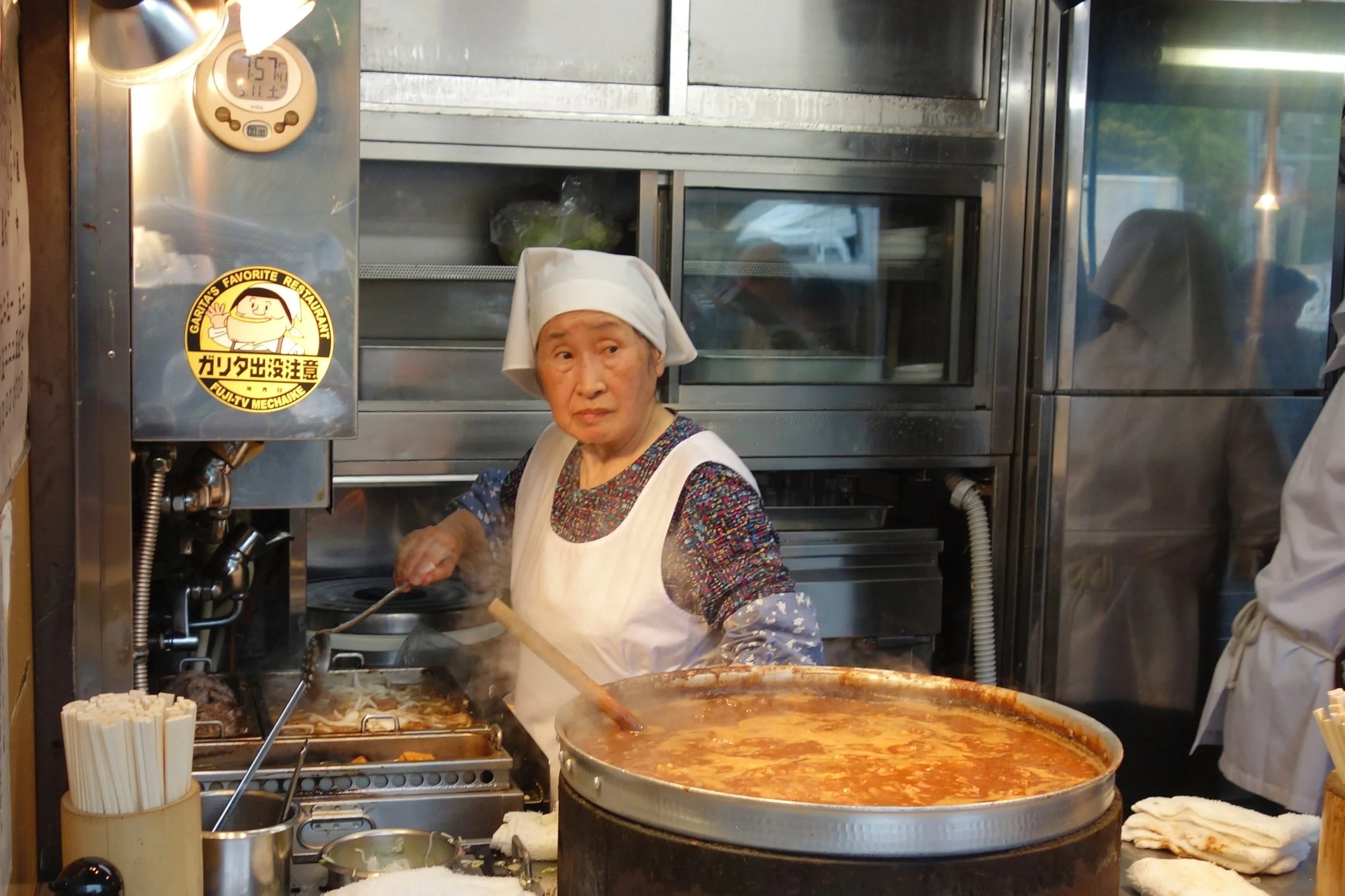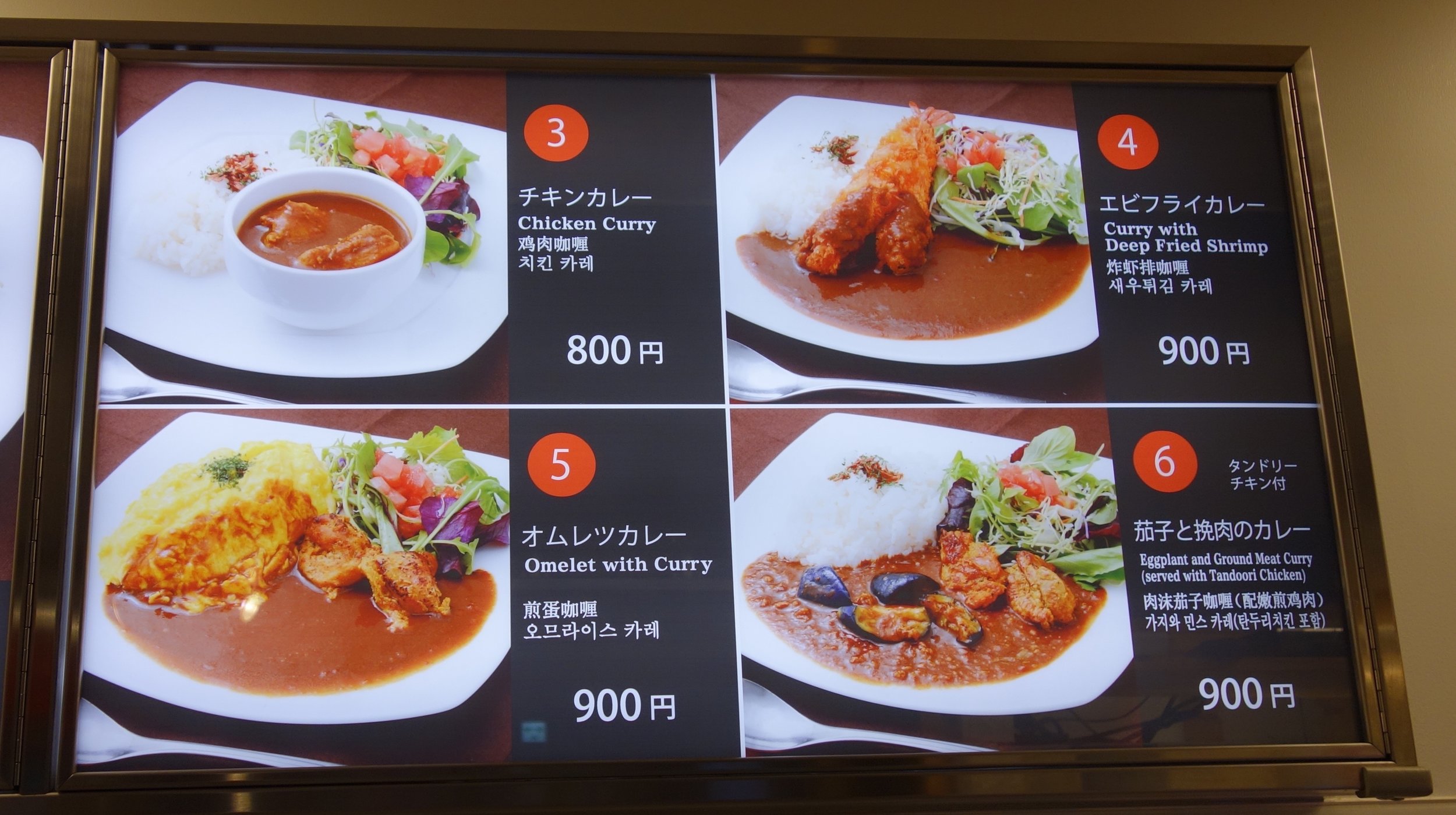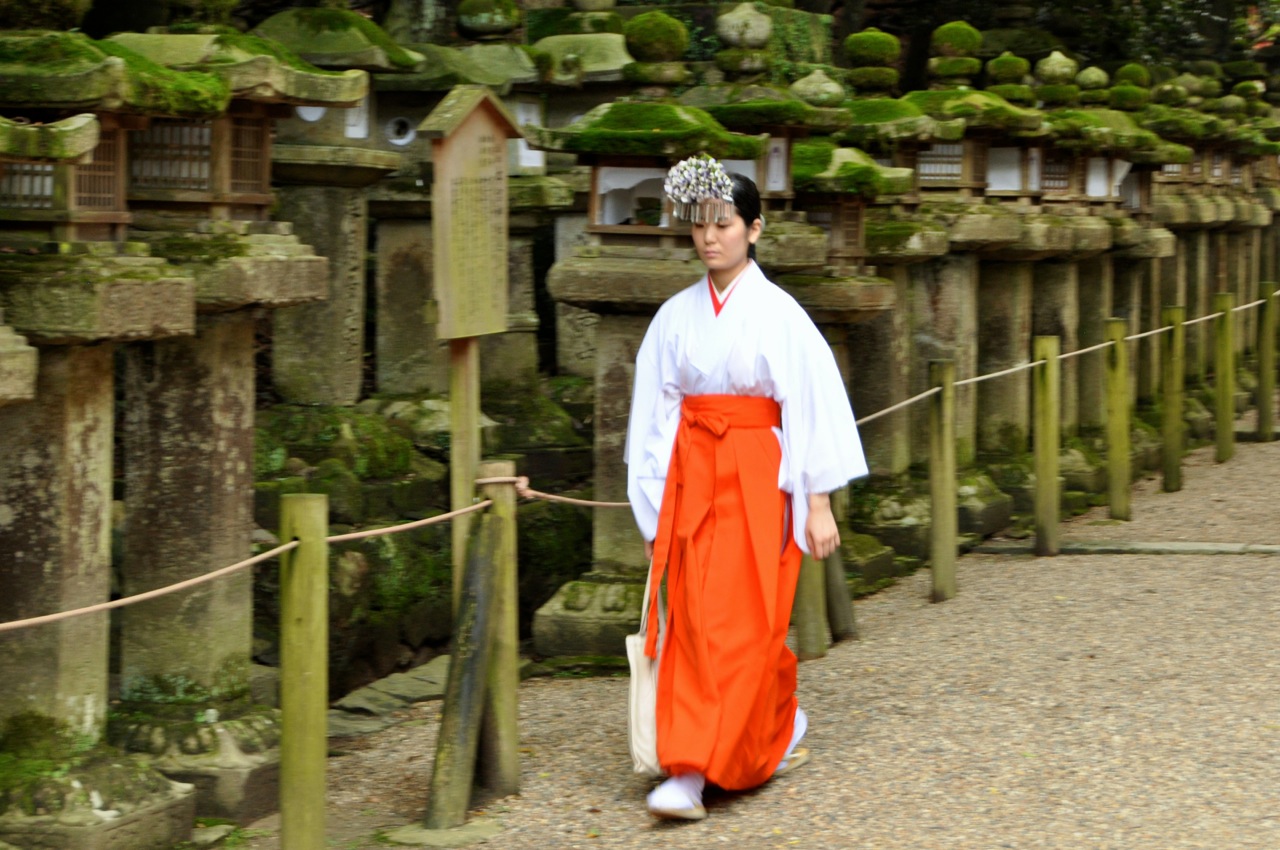Curry In Japan
When we planned our trip to Japan, we were looking forward to enjoying authentic Japanese cuisine during our travels, never anticipating that the most memorable dish we would encounter would be something quite familiar – curry!
We first discovered Japanese curry in the famous Nakamuraya restaurant, in Tokyo’s chic Shinjuku district, where chicken and seafood curries were prominently displayed on the menu. For Indian visitors like us, this was irresistible - we had to try them! The curry came in a sauceboat, accompanied by a plate of white rice, grated Parmesan cheese and little dishes of fukujinzuke, pickled vegetables. The flavors of the curry were distinctly Indian, which only deepened the mystery. There was nothing in the décor or name of the restaurant that hinted at an Indian connection, so why was a Japanese restaurant in Tokyo serving Indian food?
Curry has become such an integral part of their cuisine that most Japanese are surprised to learn it did not originate in their homeland. Curry arrived in Japan in the late nineteenth century, when for the first time many Japanese began to travel to the west and were captivated by the culture and food they encountered. Most Japanese first tasted curry when travelling on British ships and associated this exotic dish with European rather than Indian cuisine.
The recipe for English curry followed a well-tested formula: meat and onions were fried in butter, curry powder and stock added, an apple thrown in for tartness, and the mixture slowly simmered. Japanese curry was similar, with soy sauce, honey and the all-important browned roux (made by combining flour, curry powder and butter) added in, making it uniquely Japanese. Cafés began to open in Tokyo serving coffee accompanied by pastries, pasta, and strangest of all – curry.
The Japanese love affair with curry intensified in modern times with the invention of ready-to-eat curry roux. A curry can be prepared in minutes by simmering meat or vegetables with this instant mix, making it the perfect comfort food to be enjoyed at home. The Japanese, delighted to find a dish that does not require elaborate preparation, eat curry at least once a week on average. Curry is now the most popular instant food in Japan, with grocery stores selling frozen, microwavable or vacuum-sealed versions. Children adore milder curries containing apples and honey, and these have become a favourite item on school lunch menus. Curry is eaten with rice – kareh raisu, over noodles - kareh udon, or stuffed in bread - kareh pan. National curry chains have carried the dish to every corner of Japan. Whale, scallops, oysters and venison are all served in curries and considered regional delicacies.
Travelling across Japan we enjoyed many memorable dishes: sushi at Tokyo’s Tsukiji fish market; tempura in the Asakusa district; yakitori skewers at a centuries-old inn in Kyoto; a vegetarian feast consisting only of tofu prepared in a dozen different ways at a Buddhist temple. But after savouring these we always came back to curry, for it was not only a beloved flavour for us but also a little window into Japanese history.
Nakamuraya’s restaurant has a particularly fascinating past, for it first opened as a café and added curry to its menu when the owner’s daughter married an Indian revolutionary who had evaded British police and found refuge in Japan in 1915. Nakamuraya’s curry was an instant success and the elite of Tokyo flocked to the café to taste authentic Indian food. Newspaper reporters soon picked up the story and made the curry famous as the “taste of love and revolution”. Who can resist sampling that?
This recipe, with its intriguing mix of ingredients and flavours is popularly served all over Japan. The unusual combination of apples with celery, carrot and potatoes is strangely comforting!
Japanese Chicken Curry
1 lb (about 8 ) boneless skinless chicken thighs, cut into bite sized pieces
4 tbsp all purpose flour, divided
4 tbsp vegetable oil, divided
4 cloves of garlic, grated or minced
1 inch piece of ginger, grated or minced
1 medium onion, finely chopped
1 carrot, peeled and diced
1 medium Yukon Gold potato, peeled and diced
1 stick celery, sliced thin
Salt to taste
2 cups chicken broth, divided
¼ cup canned crushed tomatoes
3 tbsp unsalted butter
1 tsp each: garam masala, curry powder
¼ tsp cayenne pepper
1 apple, peeled and grated
1 tbsp soy sauce
1 tsp honey
Combine chicken and 2 tbsp flour in large mixing bowl, tossing to coat pieces well with flour.
Warm 2 tbsp oil in deep non-stick skillet set over medium high heat. Add chicken pieces, shaking off excess flour. Brown chicken for 5 min until lightly golden. Transfer to bowl.
Add remaining 2 tbsp oil to same skillet. Add garlic and ginger, sauté for about 1 min until they brown lightly. Add the onions and sauté for about 8–10 minutes, stirring occasionally, until lightly browned.
Add carrot, potato and celery, sauté 2 min. Add chicken, salt, 1 cup broth and tomatoes. Cover skillet, bring contents to a boil. Reduce heat to medium low and cook for 30 min, stirring occasionally.
Meanwhile make the roux. Warm butter in non-stick frying pan over medium heat. Add remaining 2 tbsp flour. Stirring occasionally, cook until flour turns to a light golden colour, about 10 min. Add curry powder, garam masala and cayenne pepper, cook 2 min. Add remaining 1 cup broth, cook 1 min, stirring till roux thickens.
Add roux, apple, soy and honey to chicken in skillet, stirring to mix it in gently. Cover skillet and cook for 5 min for flavours to blend and apple to soften.
Serves four
Article originally printed in Vacations Magazine, Fall 2018










